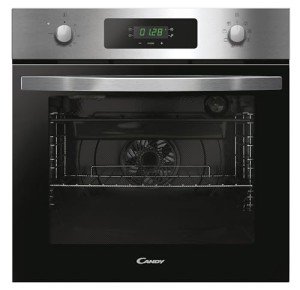This company has no active jobs
0 Review
Rate This Company ( No reviews yet )
About Us
20 Questions You Need To Have To Ask About Single Oven Before You Buy Single Oven
The Ultimate Guide to Single Ovens: Features, Benefits, and FAQs
When it comes to modern-day kitchen appliances, the single oven stands out as a flexible and necessary tool for any cooking enthusiast. In today’s hectic world, where convenience fulfills culinary craftsmanship, single ovens play a critical function in meal preparation. Understanding the functions, advantages, and types of single ovens can simplify the procedure of picking the perfect appliance for your kitchen. This detailed guide intends to supply an in-depth take a look at single ovens, their specifications, and answers to frequently asked concerns.
What is a Single Oven?
A single oven is a kitchen home appliance that includes one main cooking compartment. It is developed to perform numerous cooking functions such as baking, roasting, broiling, and more. Unlike double ovens, which include two separate cavities, single ovens take full advantage of area effectiveness, making them appropriate for smaller kitchens or those who regularly prepare meals for a few individuals.
The Anatomy of a Single Oven
In order to appreciate the functionality of a single oven, understanding its key parts is essential:
| Component | Description |
|---|---|
| Cooking Cavity | Main area where food is placed for cooking. |
| Control Panel | Interface for selecting cooking modes and changing temperature. |
| Heating Elements | Metal coils that generate heat (frequently discovered at the top and bottom). |
| Oven Door | Glass panel that allows exposure into the cooking area. |
| Racks | Removable shelves that accommodate different meals at various heights. |
Types of Single Ovens
Single ovens come in different types based upon their heating methods and designs. Here are some popular choices:
-
Conventional Ovens: Utilize gas or electrical power for a standard cooking experience. They supply consistent heat for baking and roasting.
-
Convection Ovens: Equipped with a fan that distributes hot air, resulting in quicker cooking times and even heat distribution.
-
Steam Ovens: Use steam to prepare food, maintaining moisture and nutrients. Suitable for much healthier cooking methods.
-
Wall Ovens: Built into the wall to save space; they can enhance kitchen aesthetic appeals while offering performance.
-
Microwave Ovens: While not a traditional oven, modern-day microwave can likewise bake and roast, using convenience for quick meal prep.
Functions to Look for in a Single Oven
When buying a single oven, consider the following functions to guarantee you choose an appliance that fits your cooking needs:
-
Capacity: Ensure the oven’s size accommodates your typical cooking volume. Standard capacities generally range from 4.5 to 6 cubic feet.
-
Temperature level Range: Look for an oven that supplies a broad temperature range for various cooking techniques.
-
Self-Cleaning Options: Self-cleaning modes bypass the requirement for extreme chemicals, making maintenance easier.
-
Smart Technology: Wi-Fi-enabled designs permit remote operation and monitoring through smartphone applications.
-
Interior Lighting: Bright, incandescent or LED lighting helps monitor your food without unlocking.
Typical Sizes and Capacities of Single Ovens
| Type | Typical Capacity (cubic ft) | Width (inches) | Height (inches) |
|---|---|---|---|
| Standard Conventional | 5.0 – 6.0 | 30 | 28 – 30 |
| Compact/Apartment Size | 3.0 – 4.0 | 24 | 28 – 30 |
| Wall Oven | 4.5 – 5.0 | 24 – 30 | 28 – 30 |
Benefits of Using a Single Oven
Purchasing a single oven provides many benefits for both amateur cooks and skilled chefs alike:
-
Space Efficiency: A single oven occupies less space than a double oven, making it best for smaller sized cooking areas.
-
Affordable: Generally more economical compared to double ovens, both in preliminary purchase and energy intake.
-
Flexibility: Capable of performing numerous cooking strategies, making it appropriate for a variety of dishes.
-
Ease of Use: With a smaller sized cooking area, heat circulation tends to be more effective, streamlining the cooking procedure.
-
Maintenance: Fewer elements indicate less intricacy when it concerns cleaning and repair work.
Regularly Asked Questions (FAQs)
What is the average lifespan of a single oven?
A single oven normally lasts between 10 to 15 years, depending upon usage, upkeep, and the quality of the home appliance.
How can a single oven save energy?
Buy Single Oven ovens need less power than double ovens, and many designs are created with energy performance in mind, lowering total energy usage.
Can a stove replace a standard oven?
Yes, a stove can replace a standard oven as it uses comparable cooking functions alongside quicker cooking times.
Are single ovens appropriate for large families?
While single ovens can accommodate a decent amount of food, larger families might discover that a double oven or an extra single oven matches their needs better.
How frequently should I clean my single oven?
It is recommended to clean your oven every three to 6 months, depending on usage, to keep health and performance, particularly with designs that include self-cleaning alternatives.

Is installation hard for a single oven?
A lot of single ovens included simple installation directions. However, seeking advice from an expert is advisable for safe and proper setup, particularly for gas ovens.
The single oven stays a foundation device in kitchen areas around the world. Its adaptability, efficiency, and space-saving design make it an appealing option for numerous households. Whether you are a periodic cook or a cooking fanatic, selecting the ideal single oven can significantly enhance your cooking experience. With the info shared in this guide, potential purchasers can make a notified choice, ensuring they choose an oven that best suits their culinary needs and lifestyle.
